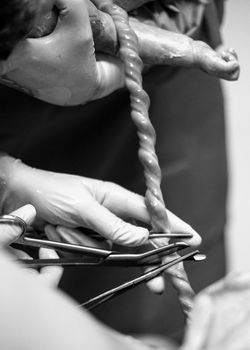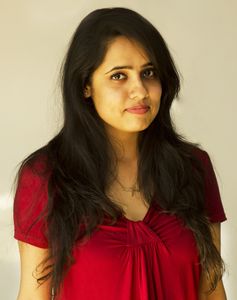Urshita Saini, 28, entered a labour room for the first time in her life in April 2017. Armed with a Canon 6D Mark 2, she was all set to click her first shots of the labour. To prepare herself for what she was about to witness, she had trained for a month with a gynaecologist. But the reality came as a shock. “It is one thing to know what was going to happen and another to be actually witnessing it,” she says. “I was like, did that person really come out of that lady? Ten seconds ago, she was screaming, and now she looked so happy. The transition was extreme.” She was so engrossed with what was happening that she was unable to focus on the photographs. “Those were not great pictures,” she says with a laugh.
It all began when she was assigned to work in the maternity section of a photography magazine. When she researched birth photography, she found that there was not a single photographer in India doing it. Over a casual conversation with her partner Sahil Gupta, she happened to mentioned this.
“So why don’t you do it?” he asked her
“Nobody else is doing it. How can I?” she replied.
“That’s why you should do it,” he said.
The conversation induced her to leave wedding photography and get into the business of shooting births. It has not been an easy journey. For four months, she frequented the corridors of hospitals, asking couples whether they wanted to capture the first pictures of their baby. They looked at her like there was something wrong with her. She was rejected by at least 20 gynaecologists, who told her that the concept was good but it would not work in India. “I thought giving birth was such an amazing moment,” says Saini. “You have been carrying that baby for nine months. You have felt its heartbeat. This would be the first time you are actually holding that baby. Why would you not want to capture that moment? It was this belief that kept me going.”
Today, she has shot countless births (“I stopped counting after 100,” she says.) Gupta and she started Inflens Photography, and now work with two other birth photographers. At Inflens, the categories are birth photography, newborn photography, fresh 48-hour session and maternity photography. She says that today, many women do not mind being shot while they are giving birth as long as the delivery is normal.
However, birth photography is a highly challenging job, she says. She has to keep herself ready 10 days before and after a client’s due date. “In all the shoots I have done, a baby has never arrived on the exact date it was supposed to,” she says. “And for some reason, 90 per cent of the babies I have shot have been born in the middle of the night. That is when I will get a call from the mother saying her water has broken. So I always have to be ready to run. Also, you can never predict how long the labour might last. I have waited in the hospital for two days on an assignment. I slept and ate there. I read books and talked to the security guards.”
The lighting is also a problem. When it is a caesarean, the light in the operation theatre is extremely sharp. During normal deliveries in the labour room and during home births, the lighting is usually very dim. “Whenever you are in pain, you want to take refuge in a dark, safe place,” she says. “You have to have exceptional knowledge of your equipment to click good pictures in such erratic lighting. Also, you have to be really fast. Everything happens in a split second.” Although usually the pictures are in monochrome, as not many people are comfortable with seeing blood and amniotic fluid, it is not a rigid rule as she feels some photographs work better in colour.
So have her experiences inside the labour room put her off from having babies? “I always wanted to have 12 children,” she says with a laugh. “I wanted a cricket team of my own. But after witnessing a birth for the first time, I was like, this is how a baby is going to come out of me? Maybe six [children] will also work.”
According to her, it is often the reaction of the fathers upon seeing their babies for the first time that is priceless. Mothers become mothers when they know they are going to have a baby, she says. But fathers realise they have become fathers only when they see their babies for the first time. Half the fathers start crying. The other half are stunned. They look at their wives in amazement. “Fathers are like popcorn,” says Saini, playfully. “You never know until the last moment which ones are going to pop and which ones are going to remain as the corn.”





